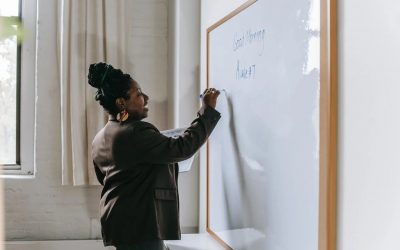Creativity in Education: Problem-Solving and Learning Techniques
In today’s ever-changing world, the importance of creativity in education extends beyond mere benefit; it is essential for preparing students to face the unexpected challenges of the future. As the educational landscape continues to evolve rapidly, the integration of creativity into learning processes becomes a critical component in developing well-rounded, adaptable minds. This article delves into the important role of creativity in education, going beyond traditional learning methods to encompass innovative problem-solving and dynamic teaching techniques. By exploring a range of creative methodologies, including divergent thinking and reverse brainstorming, we seek to shed light on how educators can effectively promote creativity in the classroom. The goal is to transform the way students perceive, engage with, and apply knowledge, preparing them for a complex and unpredictable world.
Creativity in modern education
In many educational settings, the focus is often strongly on developing factual knowledge and mastering standardized procedures. This traditional focus can lead to a significant portion of a student’s time being committed to absorbing facts, memorizing dates and events, and sticking to set interpretations in subjects like history. Nevertheless, promoting creativity in education should not be an all-or-nothing approach. It’s about striking a balance: ensuring that students learn essential knowledge and skills while also encouraging them to apply these learnings in creative and unconventional ways. The most important learning advances are seen when students are given the freedom to:
- Apply theoretical concepts practically. Moving beyond theory into real-world applications.
- Develop their cognitive boundaries. Encouraging them to think beyond traditional methods and solutions.
- Engage in innovative problem-solving. Tasks that require ‘out-of-the-box’ thinking often lead to deeper understanding and retention.
- Experiment and explore. Allowing space for trial, error, and discovery, which is necessary for creative growth.
However, following this approach can be difficult for students used to a stricter educational system. It requires a change in teaching methodologies and the mindset of students and educators alike.
Exploring the depths of divergent thinking
As we embrace the challenge of investing creativity into the learning environment, divergent thinking appears as a key method for promoting creativity and innovation in educational settings. This approach involves generating a variety of ideas or solutions, encouraging students to think beyond traditional answers. It plays a critical role in brainstorming sessions, where it helps connect different concepts or ideas, thereby revealing new possibilities. Key aspects of divergent thinking in education include:
- Idea generation. Inspiring students to come up with multiple, unique ideas.
- Creative exploration. Allowing the freedom to explore unconventional solutions.
- Expanding perspectives. Encouraging the exploration of different viewpoints and alternatives.
Divergent thinking often goes hand in hand with convergent thinking in problem-solving. While divergent thinking opens up a broad range of ideas, convergent thinking helps in refining and focusing these ideas into practical solutions.
In classroom settings, encouraging divergent thinking is important as it guides students away from the idea of single, fixed answers, leading to a more active and welcoming approach to learning. This method improves students’ adaptability and encourages a deeper engagement with the learning material, preparing them for complex problem-solving in real-world scenarios.
The Art of brainstorming in learning
Brainstorming serves as an excellent illustration of divergent thinking in action, particularly in educational environments. This process, key to developing creative skills in students, involves generating a wide range of ideas, often focused on a specific theme. The technique proves particularly effective in scenarios such as:
- Preparing for creative writing. Where students brainstorm ideas to form the basis of their stories or essays.
- Project-based learning. Brainstorming helps in developing project concepts or solutions.
However, brainstorming can sometimes be challenging. Students may find it difficult to spontaneously generate unexplored ideas, or they might hit a creative block after coming up with only a few suggestions. To improve the brainstorming process and develop a deeper level of creativity, students can be guided through structured brainstorming exercises.
Structured brainstorming exercises for enhanced creativity
While the basic brainstorming process is highly beneficial in educational settings, it can sometimes present challenges, such as difficulty in coming up with new ideas or encountering creative blocks. To overcome these challenges and deepen the level of creativity, incorporating structured brainstorming exercises can be particularly effective. These exercises are designed to guide students through the brainstorming process in a more organized and productive manner. Some key exercises include:
- Mind mapping. This visual technique inspires students to explore connections between ideas, starting from a central theme and spreading out.
- Group storytelling. Here, students collectively build a story, each contributing ideas in turn, which promotes collaborative and creative thinking.
- Role-playing scenarios. Students adopt different roles or perspectives to tackle a problem or topic, improving empathy and diverse thinking.
- ‘What if?’ scenarios. Presenting hypothetical situations to students encourages them to think creatively about possible outcomes and solutions.
- Idea relay. This involves passing ideas around a group, with each student adding to and building on the previous idea.
- Six thinking hats. This method prompts students to look at problems from multiple perspectives, such as emotional, factual, and creative angles.
- SCAMPER technique. A systematic approach to modifying existing concepts or items, encouraging innovative and adaptive thinking.
These structured exercises not only improve the brainstorming process but also provide students with valuable skills in creative thinking and problem-solving, applicable in a variety of academic and real-life contexts.
Reverse brainstorming: A twist on traditional methods
Reverse brainstorming, a unique variant of the traditional method, involves thinking about what would not work in a given situation. This approach is particularly beneficial in overcoming mental blocks and fostering critical thinking. It is useful in:
- Scientific analysis. Helps in considering what would not happen in an experiment, leading to a clearer understanding of possible outcomes.
- Historical exploration. Support in identifying unlikely events in a historical context, thereby improving analytical skills.
By initially focusing on the negatives or impossibilities, reverse brainstorming can surprisingly lead to a large number of positive and creative ideas. This method not only improves the brainstorming process but also supplies students with a valuable skill in creative thinking, useful in various academic and real-world scenarios.
Reverse brainstorming example
In a classroom exercise, students could be challenged to think of non-traditional uses for an everyday item like a chair. Initially, they might list usual functions, but as the exercise advances, they could reach a creative spot. This is where reverse brainstorming becomes valuable. Students are encouraged to consider what a chair cannot be used for. This method not only stimulates new creative pathways but also deepens the student’s understanding of the object’s possible functionalities. For example, a student might say, ‘A chair can’t be used as a musical instrument,’ which might inspire the innovative idea of incorporating musical elements into the chair’s design, like adding drum surfaces to the seat or backrest.
Tailoring creative brainstorming across various subjects
Building on the exploration of brainstorming techniques such as reverse brainstorming, we can see the versatility of these methods. Their adaptability to a wide range of subjects serves to improve learning experiences in diverse classroom scenarios. The following discussion delves into the unique application of brainstorming methods across various academic disciplines, offering educators practical strategies to encourage creativity within their teaching approaches:
- Science. Use brainstorming to encourage innovative approaches to scientific inquiries. For example, in a biology class, students could brainstorm unique ecosystems or hypothesize the impact of environmental changes on a species.
- Mathematics. Apply brainstorming to solve complex problems or explore mathematical concepts. In geometry, for instance, students might brainstorm different ways to prove a theorem or identify regularities in numbers.
- Languages and literature. In language arts, brainstorming can be used to explore themes in literature or to develop characters and stories in creative writing. For example, students could brainstorm alternative endings to a novel they are studying.
- Social studies. Use brainstorming to understand historical events from multiple perspectives or to suggest solutions to current social issues.
- Art and music. Encourage students to brainstorm innovative art projects or musical compositions, challenging them to think beyond traditional forms and styles.
By adapting brainstorming techniques to various subjects, educators can not only improve the creative capabilities of their students but also help them make meaningful connections across different areas of study. This tailored approach ensures that creativity is not an isolated skill but an essential part of the entire educational experience.
Assessing creativity in educational outcomes
After implementing creative teaching strategies and brainstorming techniques in the classroom, educators must consider their effectiveness. This assessment helps in understanding the impact of these methods on student learning, engagement, and creative development. The process of setting creativity can be challenging due to its subjective nature, but several approaches can be employed:
- Student reflections and feedback. Encouraging students to reflect on their learning experiences and provide feedback can offer valuable insights into their creative development.
- Portfolio assessments. Students can keep portfolios of their work which showcase their creative process and outcomes. Portfolios allow for a thorough review of a student’s progress over time.
- Watching and evaluating students’ work. Teachers can observe students during creative tasks, noting their engagement, problem-solving approaches, and ability to think critically and creatively.
- Project-based assessments. Evaluating student projects that require creative thinking and application of skills can help in assessing their understanding and creativity.
- Peer reviews. Students can participate in evaluations by classmates to give feedback on each other’s creative work, encouraging teamwork in learning.
- Rubrics with specific criteria. Creating guidelines with clear standards for creativity, originality, and innovative thinking can offer a more neutral way to evaluate.
- Self-assessment tools. Encouraging students to consider their work can foster self-awareness and critical thinking about their creative processes.
Final thoughts
This exploration into creativity in education underscores its vital role in developing adaptable, innovative minds for the future. Through techniques like divergent thinking and structured brainstorming, new ways are unlocked for students to engage with knowledge, fostering skills that go beyond traditional learning. As educators embrace these methods, they not only enrich classroom experiences but also prepare students for a world that values creative problem-solving and critical thinking. Finally, encouraging creativity is not just an educational goal but a necessary investment in our future generation’s potential to succeed in an ever-changing world.



